The Christie-based prototypes
The development of the A13 can be traced back to 1930, with the development of the Christie tank and revolutionary suspension in the USA. British officers, however, only really became interested in the concept after seeing a Red Army large-scale exercise and maneuvers, featuring platoons of BTs. Their sheer speed and the operational opportunities available to them were more than obvious. Later, Morris sent a team in USA to purchase one of Walter Christie's tanks, with a licence. This experimental type, named A13E1 (fall 1936), was too cramped for operations and had to be rebuilt, leading to a second prototype A13E2. The latter had the new Cruiser Mk.I (A9) turret, a revised drive train, with only the rear drive sprocket for motricity, better tracks and revised armor design. In trials, speeds in excess of 40 mph (65 km/h) were possible, but in practice, 30 mph (48 km/h) was more commonly used in cruise speed. The third prototype, A13E3, set the pre-production standards for the new A13 series. The Cruiser Mk.III was the first to be built, although in small quantities (only 65), followed by an all-improved version, the A13 Mk.II.The A13 Mk.II design
The A13 Mk.I was built at Nuffield Mechanization & Aero Limited (a subsidiary of Morris Motors) in 1939. With the threat of war growing, some shortcomings were detected and, by the 30th delivered, the War Office decided to build a new, up-armored model. The main frontal armor was to be raised to 1 in (30 mm) and the turret was to receive appliqué armor panels covering the sides and rear in a sloped formula, which was also adopted by the next generation of cruisers, the Covenanter and Crusader. This angled turret is the easiest way to distinguish between the A13 Mk.II and the Mk.I. The last Cruiser Mk.III was upgraded to this new standard before delivery.Production and variants
With war approaching, production orders were raised to 225 units, to be delivered before the end of 1940. Nuffield facilities were not sufficient, so English Electric, Leyland and LMS Railway were later called to join the wartime production. The first change affected the Vickers water-cooled 0.303 in (7.7 in) machine-gun, which gave constant troubles. The more reliable and compact Besa, with an anti-vibration mount was chosen instead. This model was derived from a Czech design. All vehicles produced by 1940 were rearmed with this new coaxial machine-gun, later known as the Mk.IVA, the main and only variant of the A13 Mk.II. In all, 665 were built of this variant, until late 1940. A close support version was also envisioned in 1939, but soon dropped, as this concept was more suited for exercises than real combat. There was eventually a third A13, but it was a complete redesign of the type, by LMS Railway, later known as the Mk.V Covenanter. This version, fitted with a new engine, was kept at home for training and the next cruiser was the more famous Crusader, in 1941.The Cruiser Mk.IV in action
With the war started, the BEF freshly landed in Northern France needed new tanks fast, ans the brand new Mk.IVs were shipped straight from the factory, sometimes with parts and fittings missing. The crews did not have the proper time to be trained and the first engagements turned unsurprisingly badly for the British units from the 1st Armoured Division. With the retreat to Dunkerque, about a hundred or so of these were left in and around Calais, some sabotaged and unrepairable, other almost intact, and fell into enemy hands. The Germans renamed them Pz.Kpfw. Mk.IV 744(e), and pressed them into service in the next campaigns, from the Balkans to Russia.On the other hand, the new Mk.IVAs, which arrived in numbers on the African soil, were the best models available in the typical early mixed armored brigades, counting up to four types of tanks, even showing good adaptation to the climate. They stayed first-line with the 7th Armoured Division until their replacement, in the fall of 1941, by the Crusader. Most were lost to German anti-tank guns, but they performed well against lightly armored Italian and early German tanks, and were reliable and popular for their protection and speed.
Links
About the Cruiser Mark IV on WikipediaOn WWIIVehicles
| A13 Mk.II specifications | |
| Dimensions | 6 x 2.54 x 2.59 m (19.9 x 8.4 x 8.6 ft) |
| Total weight, battle ready | 14.75 long tons |
| Crew | 4 (commander, driver, gunner, loader) |
| Propulsion | Nuffield Liberty V12 Petrol, 340 hp (250 kW) |
| Suspension | Christie system |
| Top speed | 48 km/h (30 mph) |
| Range (road) | 140 km (90 mi) |
| Armament | -QF Vickers 2-pdr (40 mm/1.57 in) with 87 rounds -0.303 (7.7 mm) Vickers machine-gun with 3750 rounds |
| Armor | From 6 to 25 mm (0.23-1 in) |
| Total production | 890 (combined) |
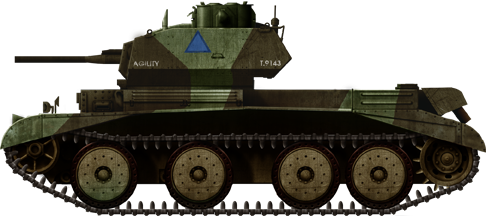
Mk.IV from the 10th Hussars, 2nd Armoured Brigade, 1st Armoured Division, BEF, 1940
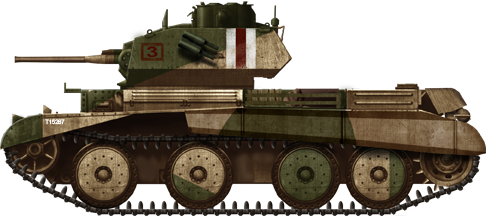
Mk.IVa, B squadron, 7th Queens Own Hussars, Libya, 1941
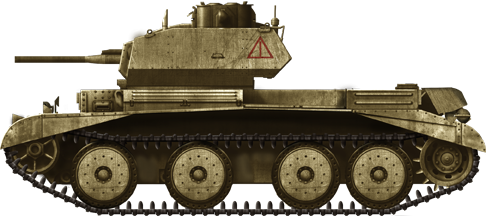
Mk.IVa, 7th Armoured Division, Egypt, 1941.
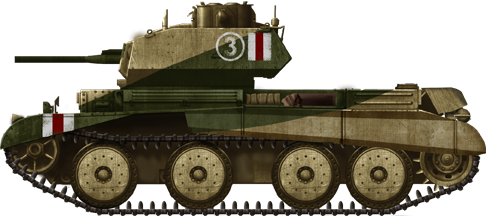
Mk.IVa, Greece, 1941.
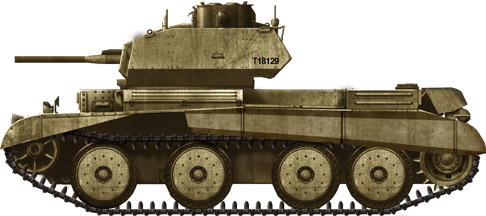
7th Infantry Brigade decoy force, Cyprus, 1942.
_ABT(f)-100.png)
Pz.Kpfw. Mk.IV 744(e), ABT(f)-100, allocated to the 18.Pz.Div, Operation Barbarossa, June 1941. About 15 were pressed into service.
Gallery


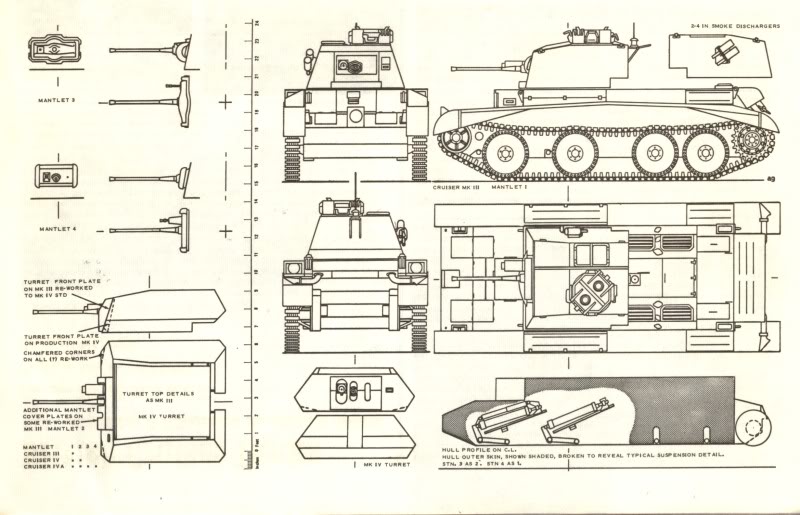
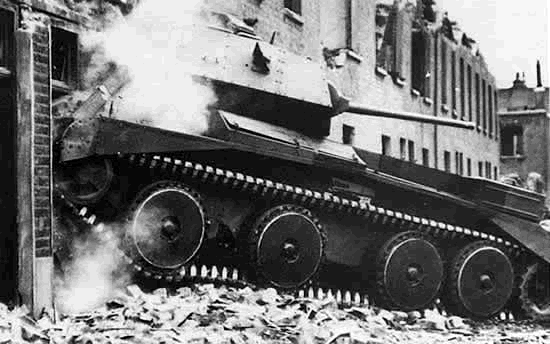
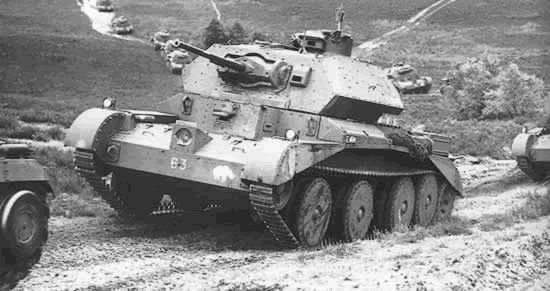
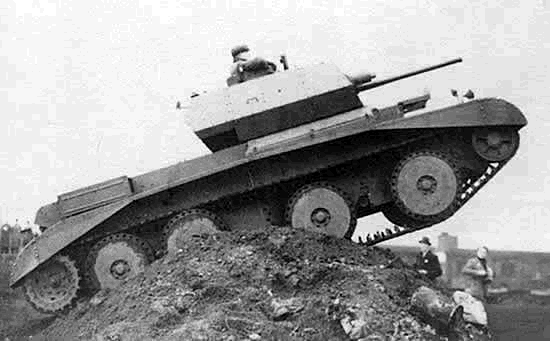
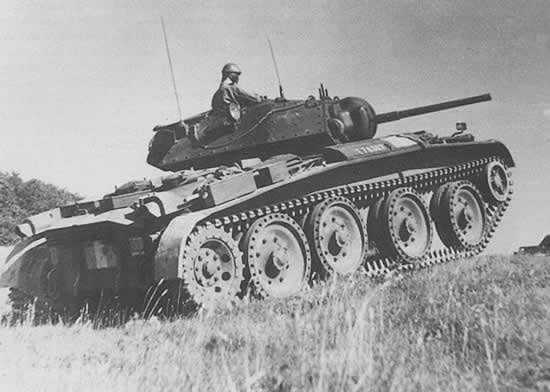

WW2 Tanks




























WW2 tanks posters

All Tiger tanks liveries.

Panther liveries and variants

WW2 Armour - All tanks











Tanks aces and single tanks series

Find more there

Museums, Movies, Books & Games
The Tanks and Armor in pop culture
Tanks and armored vehicles in general are only really grasped when seen first person: The mass, the scale, it's all there. Explore also the way tanks were covered in the movie industry, in books and in video games.Movies:
Best tanks movie on warhistoryonline.com
On imdb.com
On bestsimilar.com/
miltours.com
liveabout.com/
watchmojo.com
Video Games:
pcgamesn.com
historyhit.com
levvvel.com
vg247.com/best-tank-games
mmobomb.com/
alienwarearena.com

